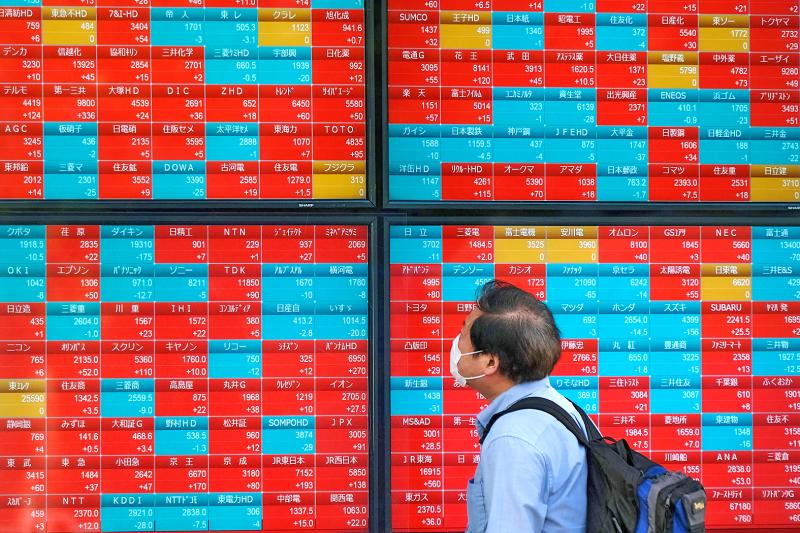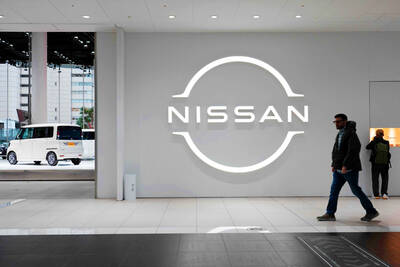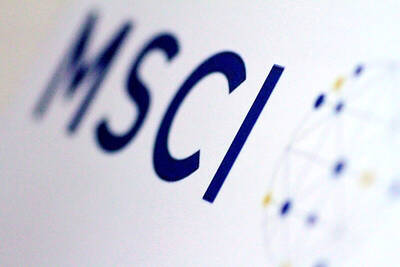Asian shares were mixed on Friday following a sell-off of technology shares on Wall Street.
In Taipei, the TAIEX closed down 0.12 percent at 12,675.95 on turnover of NT$189.942 billion, but was up 0.3 percent from 12,637.95 a week earlier.
Japan’s benchmark Nikkei 225 recouped early losses to rise 0.74 percent to 23,406.49, gaining 0.87 percent for the week. The broader TOPIX rose 0.72 percent to 1,636.64 for a weekly increase of 1.24 percent.

Photo: AFP
South Korea’s KOSPI gained 0.01 percent to 2,396.69, increasing 1.2 percent from a week earlier, while Australia’s S&P/ASX 200 lost 0.83 percent to 5,859.4, dropping 1.12 percent for the week.
Hong Kong’s Hang Seng gained 0.78 percent to 24,503.31, while the Shanghai Composite rose 0.79 percent to 3,260.35.
However, the Hang Seng and the Shanghai Composite were both down from a week earlier, losing 0.78 percent and 2.83 percent respectively.
Analysts say that investors are preoccupied with the COVID-19 pandemic and hopes for development of a safe, effective vaccine.
While Big Tech is benefiting from the shift to online life that the pandemic and stay-at-home economy has accelerated, critics said that their stocks prices have surged too high.
“Big tech stocks might have seemed like safe havens, but they have found themselves at the center of a brutal sell-off,” AxiCorp Financial Services Pty chief global market strategist Stephen Innes said.
The catch is that progress in curbing COVID-19 could hurt technology shares, Innes said.
The latest gyrations on Wall Street followed a wild stretch where the S&P 500 careened from its worst three-day slump since June to its best day in nearly three months.
The selling came as the odds lengthen that the US Congress will deliver more aid to the economy before November’s elections, support that many investors say is crucial after US federal unemployment benefits and other stimulus expired.
Partisan disagreements on Capitol Hill have kept Congress at a seeming impasse.
ING Group senior economist Nicholas Mapa said that risk aversion is dominating Asian trading with the technology sector weighing on overall sentiment.
He said that “investors are struggling to find a catalyst to reverse the recent downtrend with the much-anticipated US fiscal stimulus bill still in limbo.”
Additional reporting by staff writer

PERSISTENT RUMORS: Nvidia’s CEO said the firm is not in talks to sell AI chips to China, but he would welcome a change in US policy barring the activity Nvidia Corp CEO Jensen Huang (黃仁勳) said his company is not in discussions to sell its Blackwell artificial intelligence (AI) chips to Chinese firms, waving off speculation it is trying to engineer a return to the world’s largest semiconductor market. Huang, who arrived in Taiwan yesterday ahead of meetings with longtime partner Taiwan Semiconductor Manufacturing Co (TSMC, 台積電), took the opportunity to clarify recent comments about the US-China AI race. The Nvidia head caused a stir in an interview this week with the Financial Times, in which he was quoted as saying “China will win” the AI race. Huang yesterday said

Nissan Motor Co has agreed to sell its global headquarters in Yokohama for ¥97 billion (US$630 million) to a group sponsored by Taiwanese autoparts maker Minth Group (敏實集團), as the struggling automaker seeks to shore up its financial position. The acquisition is led by a special purchase company managed by KJR Management Ltd, a Japanese real-estate unit of private equity giant KKR & Co, people familiar with the matter said. KJR said it would act as asset manager together with Mizuho Real Estate Management Co. Nissan is undergoing a broad cost-cutting campaign by eliminating jobs and shuttering plants as it grapples

The Chinese government has issued guidance requiring new data center projects that have received any state funds to only use domestically made artificial intelligence (AI) chips, two sources familiar with the matter told Reuters. In recent weeks, Chinese regulatory authorities have ordered such data centers that are less than 30 percent complete to remove all installed foreign chips, or cancel plans to purchase them, while projects in a more advanced stage would be decided on a case-by-case basis, the sources said. The move could represent one of China’s most aggressive steps yet to eliminate foreign technology from its critical infrastructure amid a

MORE WEIGHT: The national weighting was raised in one index while holding steady in two others, while several companies rose or fell in prominence MSCI Inc, a global index provider, has raised Taiwan’s weighting in one of its major indices and left the country’s weighting unchanged in two other indices after a regular index review. In a statement released on Thursday, MSCI said it has upgraded Taiwan’s weighting in the MSCI All-Country World Index by 0.02 percentage points to 2.25 percent, while maintaining the weighting in the MSCI Emerging Markets Index, the most closely watched by foreign institutional investors, at 20.46 percent. Additionally, the index provider has left Taiwan’s weighting in the MSCI All-Country Asia ex-Japan Index unchanged at 23.15 percent. The latest index adjustments are to